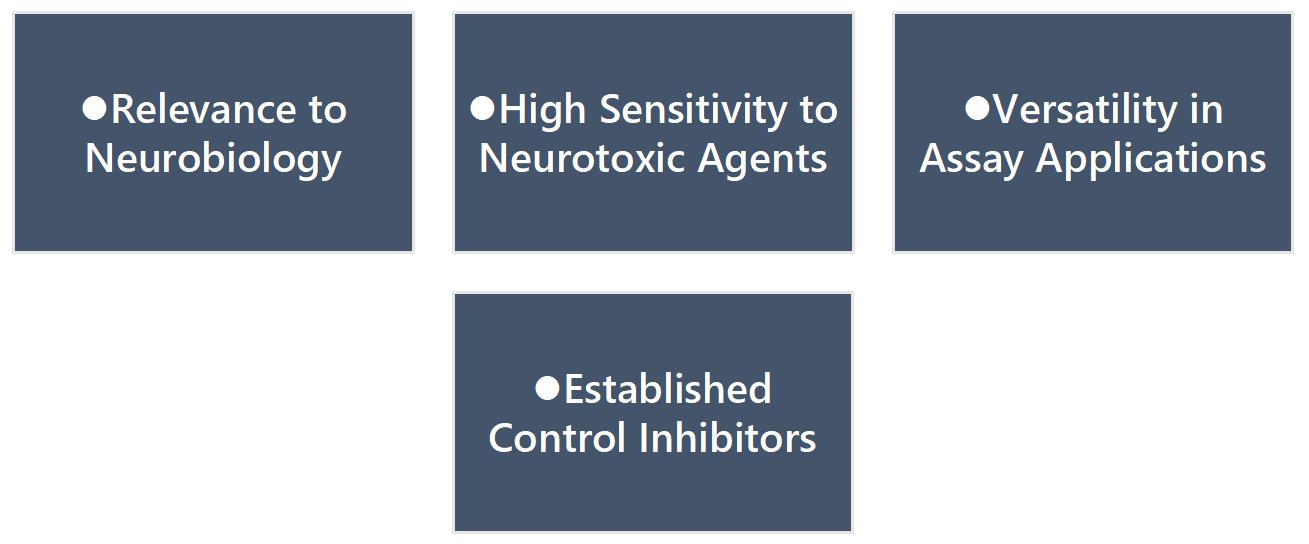Neuro-2a-based Cytotoxicity Safety Screening Service
Advancing Immunotherapy with Neuro-2a Precision
Creative Biolabs is proud to provide our In Vitro ADME service to evaluate the absorption, distribution, metabolism, and excretion properties of immunotherapy candidates to ensure their safety and efficacy in preclinical stages.
We are proud to introduce our Neuro-2a-based cytotoxicity safety screening service, designed to support the development of immunotherapy treatments through rigorous safety assessments. Leveraging our extensive expertise and state-of-the-art methodologies, we provide highly reliable and precise cytotoxicity assessments. Our professional approach ensures that your drug development processes are supported by thorough and accurate safety evaluations, enabling the advancement of safe and effective immunotherapies.
Neuro-2a cells, derived from mouse neuroblastoma, are widely used in neurobiological research due to their relevance in modeling neuronal behavior. These cells are particularly valuable for studying neurotoxicity and neuroprotection, providing reliable and consistent data that is crucial for evaluating the safety of new therapeutic candidates.
Our Neuro-2a-based cytotoxicity safety screening service rigorously assesses the cytotoxic potential of various compounds, ensuring that potential immunotherapy agents are safe for further development. Our assay utilizes Beetle luciferin + ATP as the substrate, with Tamoxifen serving as the control inhibitor. This functional assay employs Neuro-2a cells and detects luminescence, measuring the fluorescence response to evaluate cytotoxicity.
Assay Information:
|
Substrate
|
Assay Type
|
Cell Type
|
Control Inhibitor
|
Detection Method
|
|
Beetle luciferin + ATP
|
Functional
|
Neuro-2a
|
Tamoxifen
|
Luminescence
|
Why We Choose Neuro-2a Cells for Cytotoxicity Safety Screening?
At Creative Biolabs, we select Neuro-2a cells for cytotoxicity safety screening due to their distinctive characteristics and advantages, which make them an ideal model for evaluating the safety of potential therapeutic agents.

-
Relevance to Neurobiology
Neuro-2a cells, derived from mouse neuroblastoma, are well-established in neurobiological research. Their origin makes them highly relevant for studying neuronal behavior and neurotoxicity, providing insights that are particularly valuable for the development of neuroprotective and neurotherapeutic agents.
-
High Sensitivity to Neurotoxic Agents
Neuro-2a cells are highly sensitive to neurotoxic agents, allowing for the detection of subtle cytotoxic effects that might not be observed in other cell lines. This sensitivity ensures that potential toxicities are identified early in the drug development process.
-
Versatility in Assay Applications
These cells are versatile and can be used in various assay formats, including luminescence-based cytotoxicity assays. This flexibility allows for the integration of different detection methods and experimental conditions, enhancing the robustness of the screening process.
-
Established Control Inhibitors
In our assays, control inhibitors like Tamoxifen are effectively utilized with Neuro-2a cells. The established response of these cells to known inhibitors supports the validation and accuracy of the screening assays.
Workflow
|
1. Cell Culture Preparation
|
-
Neuro-2a cells are maintained in appropriate growth media and incubated under optimal conditions until they reach the desired confluence.
|
|
2. Assay Plate Preparation
|
-
96-well assay plates are prepared by ensuring each well is clean and properly conditioned to support Neuro-2a cell adhesion and growth.
|
|
3. Cell Seeding
|
-
Neuro-2a cells are seeded into the prepared assay plates at a specified density per well. The cells are allowed to adhere and grow for a set period, typically overnight, to ensure a uniform and healthy cell layer.
|
|
4. Treatment with Test Compounds
|
-
A series of test compounds are prepared at various concentrations. Tamoxifen is used as a control inhibitor.
-
The test compounds and control inhibitor are added to the appropriate wells, ensuring proper mixing and distribution.
|
|
5. Substrate Addition and Incubation
|
-
Beetle luciferin + ATP substrate mixture is added to each well. This substrate is used to detect cell viability through luminescence, as living cells will convert the substrate into a luminescent signal.
-
The assay plates are incubated for a defined period under controlled conditions to allow the test compounds to interact with the cells and the substrate to react.
|
|
6. Luminescence Measurement:
|
-
After the incubation period, luminescence is measured using a luminometer. The intensity of the luminescent signal correlates with the number of viable cells, allowing for the assessment of cytotoxicity.
|
|
7. Data Analysis
|
-
Luminescence data are collected and analyzed to determine the cytotoxic effects of the test compounds.
-
Fluorescence responses are quantified, and dose-response curves are generated to evaluate the potency and toxicity of each compound.
|
Applications
-
Neurotoxic Assessment: Utilizing Neuro-2a cells, our carrier is right for comparing the neurotoxic capability of recent compounds.
-
Pharmacological Testing: supporting to emerge as privy to any capability negative outcomes on neuronal cells early in the drug improvement manner.
-
Toxicity Profiling: Essential for setting up toxicity profiles of chemicals and biologics, contributing to the protection assessment required for regulatory submissions.
Advantages
-
Neuro-2a cells are derived from mouse neuroblastoma, making them enormously applicable for research associated with neuronal conduct and neurotoxicity.
-
Neuro-2a cells are recognized for excessive sensitivity to neurotoxic dealers. This sensitivity ensures early identification of capability toxicities.
-
The assay makes use of Beetle luciferin + ATP substrate and luminescence detection, offering a touchy and quantitative degree of cellular viability and cytotoxic consequences.
-
Tamoxifen is used as a manipulated inhibitor to validate the assay effects.
Creative Biolabs invites researchers and pharmaceutical developers to take advantage of our Neuro-2a-based cytotoxicity safety screening service. Our expertise and advanced methodologies ensure precise and reliable evaluations of drug safety profiles, supporting the development of safe and effective therapies. Contact us and discuss with us.
For Research Use Only | Not For Clinical Use



 Download our brochure
Download our brochure